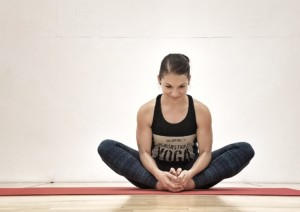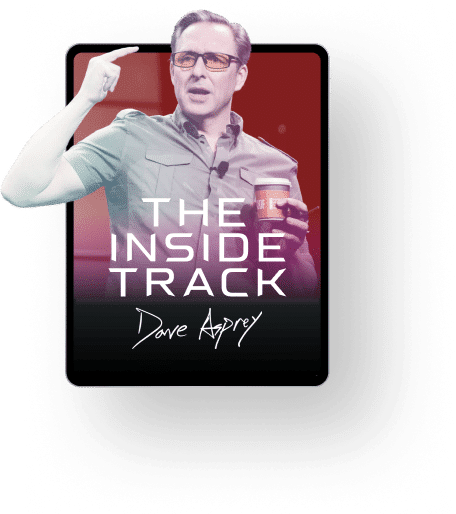You already know that yoga can be a fun way to learn how to move better. Research shows it also hacks everything from anxiety and stress [1] to chronic pain [2,3]. There’s a reason yoga’s been around for thousands of years. It’s a robust and powerful tool as it is.
That said, there’s no reason you can’t make it even better by incorporating technology.
Whether you have a full-fledged yoga practice, or you are looking for a minimum-effective-dose approach to the benefits of yoga, augmenting asanas with these potent tools will accelerate your transformation into an even more resilient organism.
If you’ve ever read any yoga texts, you know that the originators of yoga would have used every tool at their disposal to achieve their goals – they just didn’t have our fun toys!
[Tweet “Make yoga even better by incorporating technology.”]
Inversion Table
Hanging out upside down sends nutrient- and oxygen-rich blood to your brain. Traditional inversion-based poses (headstands, shoulder-stands, etc.) are great for oxygenating your brain. They also give you some interesting athletic benefits in their own rights, but they take a lot of skill to do properly. An inversion table gives you some of the benefits of a headstand without the risk of injury. On top of that, inversion equipment lets you hang freely, which gives you a level of spinal decompression you won’t get with a handstand [4], and when you aren’t worried about straining your muscles (or losing your balance, for that matter), you can relax deeper into the inversion. It’s worth it to learn to do a real headstand for the muscle control – it’s just that you can’t usually hold a headstand for 15 minutes. You can invert for that long.
Inversion tables can get pricey. I use a Teeter table and love it, which is why I invited Teeter to advertise on Bulletproof Radio. If you’re looking for a less expensive option (or affiliate links aren’t your thing), a simple table like this one works well too.
Blocks and Straps
Blocks and straps are already a staple of the yoga community. Popular thanks to Iyengar Yoga (a very functional form of yoga with an emphasis on alignment), blocks and straps allow you to correctly perform asanas that would have been otherwise impossible due to a barrier in your flexibility or balance. If you want to build mobility in record time, these are invaluable, although they aren’t exactly new technology. 😉
Bulletproof Vibe
The Bulletproof Vibe is one of the most effective tools a biohacker can add to his or her arsenal. It uses whole body vibration to increase strength and help decrease unwanted body fat, all in just minutes per day. It also promotes lymphatic drainage, increases bone mass, and improves flexibility and mobility. You can read more about the Vibe and its benefits here.
The Vibe stresses your neurological and muscular systems 30 times per second, turning simple movements into effective ways to train your body. Standing, squatting, one-legged balancing, and plank pose are awesome starts. You can use the Vibe for stationary poses as well: the vibrations will activate and relax your muscles, helping you sink deeper into the stretch.
Butterfly pose, with your feet on or off the vibe, feels amazing (the photo example below features Catherine, Bulletproof team member and yogi extraordinaire). The massage of the plate works almost like stationary foam rolling. One thing: we caution against any pose where your head or neck is directly on the Vibe. It can get bumpy.
Visiting Southern California? You can try the Vibe for free at either of our Bulletproof Cafes.
Sleep Induction Mat
Some yoga practitioners say that you don’t end with Savasana (corpse pose), you aren’t really doing yoga. It’s about allowing your body to fully relax: the joy of non-doing. So how can we hack everyone’s favorite pose? Make it even more relaxing. A sleep induction mat uses acupressure points to shock your body into a fight-or-flight response. Your nervous system is on edge for a few minutes, but as it adapts to the stimulus it releases lots of tension, as do your muscles. Add the mat to your next Savasana for deeper relaxation. This is a perfect hack if you do yoga before bed.
Heart Rate Variability (HRV)
Asana (physical posing) is only one aspect of yoga. In traditional Yogic philosophy, there are eight “limbs” which are all considered equally essential to liberating (read: upgrading) yourself: things like Pranayama (breath control), Pratyahara (withdrawal), Dharana (concentration), Dyana (contemplation), and Samadhi (bliss). These are all aspects of a complete yoga practice, in addition to the calisthenics or feats of flexibility most teachers focus on.
Bringing a meditative aspect to yoga makes it all the better, especially when it comes to relieving stress. Heart Rate Variability (HRV) is a shortcut to a deep meditative state through mindfulness and pranayama (breath control) – it gives you feedback on how Zen you are, which lets you train yourself to get in the zone within minutes and stay there. Doing an HRV session before you start or after you finish yoga hacks your relaxation and focus so you get more out of the experience. This article talks more about the power of HRV.
Biohacking is all about getting the biggest benefit with the least effort. Yoga is a potent way to upgrade your physical and mental states, even if you don’t use the toys and tricks in this article. But why not enhance its effectiveness with a little technology?
This works no matter what form of yoga you practice (I’m a fan of Anusara, a subset of Iyengar).
Tell me which of these hacks works best for you, and what form of yoga you practice!
While you’re at it, please subscribe below for more biohacking content like this to help you perform better. Thanks for reading and have a great week!
[expand title=”Click to read the complete list of references.” swaptitle=”Click to hide references.”]
- https://www.ncbi.nlm.nih.gov/pubmed/22502620
- https://www.ncbi.nlm.nih.gov/pmc/articles/PMC3276929/
- https://www.ncbi.nlm.nih.gov/pubmed/23894731
- https://www.ncbi.nlm.nih.gov/pmc/articles/PMC2484360/

